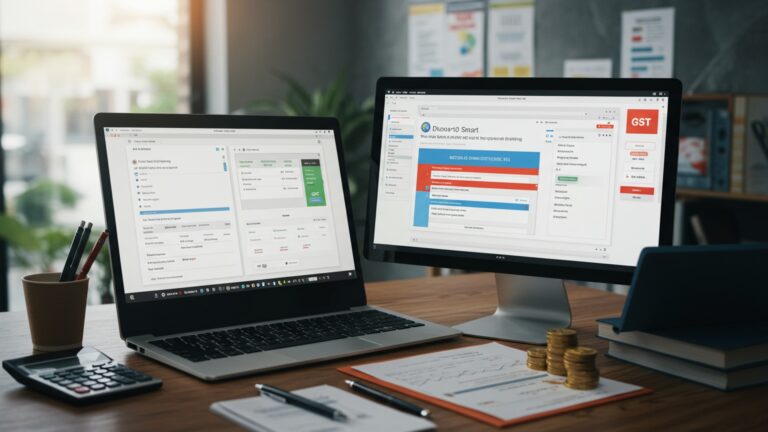7 Essential Tips to Prevent Billing Errors and Save Your Business Money
In today’s complex digital landscape, where intricate subscription models and dynamic service bundles are standard, even a small billing error can trigger a domino effect, significantly impacting your business. Incorrect quantities, missed promotional discounts, or misapplied tax rates don’t just represent lost revenue; they erode customer trust, generate time-consuming disputes. inflate operational costs for correction, sometimes even touching on compliance risks. Proactive strategies to prevent billing errors are therefore essential, moving beyond mere damage control to become a cornerstone of financial stability and customer satisfaction. Businesses leveraging integrated systems for real-time validation and automated reconciliation gain a critical advantage, transforming potential financial drains into opportunities for enhanced efficiency and stronger client relationships.

Embrace Advanced Billing Software Solutions
In today’s fast-paced business environment, relying on manual processes for billing is akin to navigating with a paper map in the age of GPS. Manual data entry, spreadsheet errors. forgotten invoices are significant culprits behind billing inaccuracies. To effectively prevent billing errors, a business must first and foremost integrate robust billing software into its operations. Billing software, at its core, automates the invoicing, payment tracking. financial reporting processes, significantly reducing the human error factor.
What is Billing Software?
Billing software is a specialized application designed to streamline and manage a company’s invoicing and payment collection cycles. It automates tasks such as generating invoices, tracking payment statuses, sending reminders. often integrating with accounting systems. Key features typically include:
- Automated invoice generation from services or products sold.
- Tracking of accounts receivable and payable.
- Recurring billing capabilities for subscription services.
- Integration with payment gateways for seamless transactions.
- Detailed reporting and analytics on financial performance.
Consider a small e-commerce startup, “GadgetGo,” which initially managed its invoicing using complex spreadsheets. They frequently encountered issues like miscalculated taxes, unbilled shipping fees. delayed payments due to forgotten follow-ups. After implementing a cloud-based billing solution, GadgetGo reported an 80% reduction in billing-related disputes and a 30% improvement in payment collection times within six months. This real-world example underscores the profound impact automation has on financial accuracy and efficiency.
Manual vs. Automated Billing: A Quick Comparison
| Feature | Manual Billing (Spreadsheets, Paper) | Automated Billing (Software) |
|---|---|---|
| Error Rate | High (human error in data entry, calculations) | Low (automated calculations, data validation) |
| Time Efficiency | Time-consuming (manual input, reconciliation) | Highly efficient (instant invoice generation, tracking) |
| Scalability | Limited (difficult to manage growing volume) | High (handles increased transactions with ease) |
| Reporting | Basic, requires manual compilation | Comprehensive, real-time analytics |
| Cost Savings | Potential hidden costs (corrections, lost revenue) | Significant (reduced errors, improved cash flow) |
By leveraging dedicated software, businesses can proactively prevent billing errors, ensure accurate financial records. free up valuable staff time for more strategic tasks.
Standardize and Document Your Billing Processes
Even with the most sophisticated software, a lack of clear, consistent procedures can introduce vulnerabilities into your billing cycle. Standardizing and thoroughly documenting your billing processes is a critical, often overlooked, step to prevent billing errors. This involves creating a set of clear, step-by-step instructions for every billing-related task, from initial service agreement to final payment reconciliation.
What are Standard Operating Procedures (SOPs)?
Standard Operating Procedures (SOPs) are detailed, written instructions that describe how to perform routine tasks. For billing, SOPs would cover:
- How to onboard a new client and enter their billing insights.
- The process for creating, reviewing. sending invoices.
- Guidelines for applying discounts, promotions, or special terms.
- Steps for managing overdue payments and sending reminders.
- Procedures for handling billing disputes and issuing credits.
Imagine “DesignPro,” a web development agency. Before standardizing, each project manager had their own way of billing. This led to inconsistencies: some clients were billed hourly, others by project milestone. sometimes services were accidentally duplicated or missed. After implementing a detailed SOP, including checklists for project completion and invoice generation, DesignPro saw a 40% reduction in client queries related to billing and significantly fewer unbilled hours. As financial expert Jane Smith, author of “Smart Business Finance,” often emphasizes, “Consistency is the bedrock of financial accuracy. Documented procedures ensure everyone is on the same page, minimizing the chance of costly mistakes.”
- Map Your Current Process
- Identify Bottlenecks and Inconsistencies
- Develop Clear SOPs
- Centralize Documentation
- Regularly Review and Update
Document every step of your existing billing workflow.
Pinpoint where errors most frequently occur or where processes diverge.
Write down the standardized steps for each billing task. Use flowcharts and checklists for visual clarity.
Store SOPs in an easily accessible location for all relevant team members.
As your business evolves, so too should your billing procedures. Review SOPs at least annually or when significant changes occur.
By establishing and adhering to these documented procedures, businesses build a robust framework that helps prevent billing errors, ensures fairness. maintains financial integrity.
Implement Regular Reconciliation and Auditing Protocols
Even with automated systems and standardized processes, discrepancies can emerge. This is where the power of regular reconciliation and auditing comes into play. These practices act as crucial checkpoints, allowing businesses to identify and rectify errors before they escalate into significant financial losses or client disputes. They are indispensable for any business serious about its financial health and its ability to prevent billing errors.
What is Reconciliation?
Reconciliation is the process of comparing two sets of records to ensure they match and are accurate. For billing, this typically involves comparing internal records (e. g. , invoices issued, payments received) with external records (e. g. , bank statements, client payment confirmations). The goal is to identify any discrepancies or unmatched transactions.
What is Auditing?
Auditing, in this context, refers to a systematic and independent examination of financial records, transactions. internal controls to determine if financial insights is presented fairly and in accordance with established criteria. A billing audit specifically reviews the entire billing process for accuracy, compliance. efficiency.
Consider “ServiceCo,” a consulting firm. For years, they struggled with unbilled hours and services. A quarterly audit revealed that project managers were not consistently logging all billable time. some services agreed upon verbally were never formally invoiced. By implementing weekly reconciliation of project time logs against invoices. a monthly audit of accounts receivable, ServiceCo discovered an average of $5,000 in previously unbilled services each month. This directly translated into increased revenue and dramatically helped to prevent billing errors from slipping through the cracks.
- Bank Reconciliation
- Accounts Receivable Reconciliation
- Accounts Payable Reconciliation
- Service/Product Reconciliation
Matching your internal cash records with your bank statements.
Ensuring the money clients owe you matches your records.
Verifying what you owe vendors matches their invoices.
Comparing services rendered or products shipped against invoices generated.
- Schedule Regular Reconciliations
- Conduct Periodic Billing Audits
- Utilize Software Features
- Assign Responsibility
Implement daily, weekly, or monthly reconciliation routines depending on your transaction volume. For example, reconciling bank statements weekly can catch issues quickly.
Perform internal audits quarterly or semi-annually. This can involve reviewing a sample of invoices for accuracy, proper documentation. adherence to company policies.
Many modern accounting and billing software solutions offer built-in reconciliation tools that flag discrepancies automatically.
Clearly designate individuals responsible for reconciliation and auditing tasks to ensure accountability.
By embedding these practices into your financial operations, you create a safety net that catches errors, ensures financial transparency. significantly helps to prevent billing errors from impacting your bottom line.
Invest in Comprehensive Team Training
While technology and processes are foundational, the human element remains paramount in preventing billing errors. Your team members are the ones interacting with the systems, entering data. communicating with clients. Insufficient training or a lack of understanding can quickly undermine even the most robust systems. Therefore, investing in comprehensive, ongoing training for your team is an indispensable strategy to prevent billing errors and safeguard your business’s finances.
Untrained or inadequately trained staff can lead to a multitude of billing issues:
- Incorrect data entry (e. g. , wrong quantities, prices, client details).
- Misunderstanding of billing terms or contract clauses.
- Inconsistent application of discounts or special rates.
- Failure to follow established billing procedures (SOPs).
- Errors in calculating taxes or applying specific tax rules.
“One of the biggest leaks in a business’s revenue stream often isn’t malicious. simply a lack of understanding,” notes financial consultant Michael Chen. “Empowering your team with knowledge about your billing system and policies directly translates to fewer errors and better cash flow.”
Consider a large enterprise, “GlobalTech,” which onboarded dozens of new sales representatives monthly. Their initial training was superficial regarding billing procedures. This led to a surge in invoices with incorrect product codes, misapplied service charges. customer complaints about unexpected fees. After revamping their training program to include dedicated modules on billing software usage, contract interpretation. common error identification, GlobalTech reported a 60% decrease in billing-related customer service tickets within a year. This demonstrates how targeted training can directly help to prevent billing errors at the source.
- Software Proficiency
- Company Policies
- Contract Interpretation
- Compliance and Regulations
- Error Identification & Correction
Hands-on training for all billing software features, including data entry, invoice generation, reporting. troubleshooting common issues.
Detailed instruction on internal billing policies, discount structures, payment terms. credit procedures.
Training on how to read and grasp client contracts, service agreements. statements of work to ensure accurate billing.
Education on relevant tax laws, industry-specific billing regulations. data privacy (e. g. , GDPR, CCPA).
How to spot potential errors, what steps to take when an error is found. who to escalate issues to.
- Develop Comprehensive Training Modules
- Provide Hands-on Practice
- Offer Ongoing Education
- Create a Knowledge Base
- Encourage Peer Learning
Create structured lessons for all billing-related tasks.
Allow staff to practice using the billing software in a test environment.
Conduct regular refresher courses, especially when software updates or policy changes occur.
Establish an internal wiki or document repository with FAQs and how-to guides for quick reference.
Foster an environment where experienced staff can mentor newer team members.
By prioritizing continuous and thorough training, you equip your team with the knowledge and skills needed to proactively prevent billing errors, contributing significantly to your business’s financial accuracy and reputation.
Leverage Technology for Automated Data Validation
In the digital age, data is king. only if it’s accurate. Incorrect or incomplete data entered into your billing system is a primary cause of errors, leading to overcharges, undercharges. customer dissatisfaction. Automated data validation is a powerful technological approach to proactively prevent billing errors by ensuring the integrity of insights at the point of entry and throughout the billing cycle.
What is Automated Data Validation?
Automated data validation involves using software rules, algorithms. external lookups to check the accuracy, completeness. consistency of data. This process ensures that data conforms to specific standards or formats before it is accepted into a system or used for billing. It’s about building safeguards directly into your workflows.
- Real-time Input Checks
- Database Lookups
- API Integrations
- AI and Machine Learning
As data is entered (e. g. , product codes, customer IDs, addresses), the system can immediately flag invalid formats, missing fields, or non-existent entries.
Integrating your billing system with other databases (e. g. , CRM, inventory, external address verification services) allows for cross-referencing and validation. For instance, verifying a customer’s shipping address against a postal service database.
Application Programming Interfaces (APIs) enable different software systems to communicate. For billing, this means your system can “talk” to a tax calculation API to ensure correct sales tax is applied based on location, or a payment gateway API to validate credit card details.
Advanced systems can learn patterns of common errors or fraudulent activities and flag unusual transactions for review.
For example, “ParcelConnect,” a logistics company, frequently faced issues with incorrect shipping addresses leading to delayed deliveries and re-billing. They implemented an address validation API into their order entry system. Now, when a customer enters an address, the system automatically checks it against a national postal database. If a discrepancy is found, the system prompts the user to correct it immediately. This simple integration drastically reduced re-billing instances and improved customer satisfaction, directly helping to prevent billing errors related to delivery.
Here’s a simplified example of how data validation might work in a system, conceptually (not actual code for a billing system. illustrating the idea):
function validateInvoiceData(invoice) { if (! invoice. customer_id || typeof invoice. customer_id ! == 'string') { return { valid: false, message: 'Customer ID is required and must be a string.' }; } if (! invoice. amount || typeof invoice. amount ! == 'number' || invoice. amount <= 0) { return { valid: false, message: 'Invoice amount is required and must be a positive number.' }; } if (! invoice. currency || ['USD', 'EUR', 'GBP']. indexOf(invoice. currency) === -1) { return { valid: false, message: 'Invalid currency specified.' }; } // Simulate an API call for real-time customer existence check // if (! checkCustomerExists(invoice. customer_id)) { // return { valid: false, message: 'Customer ID does not exist in CRM.' }; // } return { valid: true, message: 'Invoice data is valid.' };
} // Example usage:
// let validInvoice = { customer_id: 'CUST123', amount: 150. 75, currency: 'USD' };
// console. log(validateInvoiceData(validInvoice)); // { valid: true, message: 'Invoice data is valid.' } // let invalidInvoice = { customer_id: 'CUST456', amount: -20, currency: 'XYZ' };
// console. log(validateInvoiceData(invalidInvoice)); // { valid: false, message: 'Invoice amount is required and must be a positive number.' }
This conceptual code block illustrates how a function could check for basic data integrity before an invoice is finalized. Real-world implementations are far more complex, involving multiple layers of checks and external integrations.
- Enable Built-in Validation
- Integrate with External Services
- Implement Custom Validation Rules
- Regularly Review Validation Logs
Configure your billing and CRM software to utilize all available validation rules (e. g. , mandatory fields, data type checks).
Connect your systems with third-party APIs for address validation, tax calculation. credit checks.
Work with your IT team or software vendor to create specific rules tailored to your business logic (e. g. , minimum order values, specific product combinations).
Monitor validation failures to identify common data entry issues and provide targeted training.
By making data validation an integral part of your billing ecosystem, you proactively build a robust defense that helps to prevent billing errors, ensuring cleaner data and more accurate invoices.
Foster Clear and Proactive Communication with Stakeholders
Many billing errors don’t originate from calculation mistakes or software glitches. from miscommunication. Ambiguous service agreements, unclear scope changes, or uncommunicated policy updates can directly lead to billing disputes, customer dissatisfaction. ultimately, lost revenue. To truly prevent billing errors, businesses must prioritize clear, proactive. consistent communication with all relevant stakeholders, both internal and external.
- Internal Alignment
- Client Expectations
- Dispute Resolution
Ensuring sales, operations. finance teams are all on the same page regarding service delivery, pricing. billing schedules.
Clearly setting and managing client expectations about what services are included, how they will be billed. what triggers additional charges.
Promptly addressing and clarifying any billing questions or concerns from clients or vendors before they escalate.
Consider “CreativeWorks,” a marketing agency. They had a client whose project scope expanded significantly during development. The sales team verbally agreed to the extra work, the design team executed it. the finance team was never formally notified of the scope change or the adjusted billing. The client was shocked by the final invoice, claiming the additional charges were never approved for billing. This led to a significant discount being issued. a strained client relationship – a clear example where a breakdown in internal communication directly caused a costly billing error.
As industry experts at the Association of Financial Professionals often highlight, “Effective communication is the unsung hero of financial management. It bridges gaps, clarifies ambiguities. prevents costly misunderstandings that can cripple a business’s cash flow.”
- Document All Agreements
- Establish Internal Communication Protocols
- Set Clear Client Expectations Upfront
- Proactive Invoice Communication
- Designate a Billing Contact
- Regular Check-ins
Ensure every verbal agreement, scope change, or special term is formally documented, ideally with client sign-off. communicated to the billing department.
Create clear channels and procedures for data flow between sales, project management. finance teams regarding billing-related updates. A simple internal form or project management software integration can be invaluable.
During the sales and onboarding process, explicitly communicate billing cycles, payment terms. what constitutes a billable event. Provide a detailed breakdown of services and associated costs.
Send pre-invoice notifications or detailed statements that allow clients to review upcoming charges before the final invoice is issued. This gives them an opportunity to ask questions early.
Provide clients with a clear point of contact for any billing inquiries, ensuring quick and consistent responses.
For long-term projects or retainer clients, schedule periodic billing reviews to discuss usage, potential overages, or upcoming charges.
By fostering a culture of clear and proactive communication, you build trust with your clients and vendors, minimize misunderstandings. significantly strengthen your ability to prevent billing errors from negatively impacting your business relationships and financial health.
Meticulously Review All Contracts and Agreements
The foundation of every billing transaction lies within the contracts and agreements you establish with your clients and vendors. Neglecting to meticulously review these documents for clarity, accuracy. completeness is a common, yet often overlooked, source of billing errors. Vague terms, forgotten clauses, or misunderstandings of contractual obligations can lead to significant financial discrepancies. To truly prevent billing errors, a rigorous approach to contract review is essential.
- Defines Billing Terms
- Outlines Scope of Work
- Addresses Special Conditions
- Manages Renewals and Cancellations
Contracts specify payment schedules, rates, late fees. accepted payment methods.
Clearly defines what services or products are included and what constitutes an additional billable item.
Covers unique discounts, promotional periods, or specific performance metrics tied to billing.
Details the process and financial implications of contract renewals or terminations.
Consider “SoftwareSolutions,” a SaaS provider. They offered various subscription tiers, each with different user limits and data storage. A new sales representative, in eagerness, promised a client “unlimited storage” verbally, which wasn’t in their standard contract for that tier. The client was then billed for overage charges, leading to a heated dispute and eventual churn. This costly error stemmed directly from a failure to align the sales promise with the written contract and to ensure the billing team was aware of the actual contracted terms, emphasizing the need to prevent billing errors by thorough review.
As legal and business consultant Sarah Jenkins often advises, “Your contract is your financial blueprint. Any ambiguity or oversight in it is an open invitation for billing discrepancies and legal headaches down the line.”
- Vague Scope of Work
- Unclear Pricing Structures
- Undefined Change Order Process
- Automatic Renewals
- Service Level Agreements (SLAs)
“General consulting services” can lead to disputes over what’s billable. Specific deliverables and hours are crucial.
Ambiguity around hourly rates, project fees, or how additional services are priced.
Lack of a clear process for approving and documenting scope changes and their associated costs.
If not clearly communicated and managed, automatic renewals can lead to clients being billed for services they no longer want, causing disputes.
Failure to meet SLAs might trigger penalties or refunds, which need to be accurately tracked and processed.
- Standardize Contract Templates
- Implement a Multi-Party Review
- Create a Contract Checklist
- Centralize Contract Management
- Train on Contractual Nuances
- Regular Audits of Contract Compliance
Use pre-approved contract templates that clearly define all billing-related terms. Customize only when absolutely necessary and with legal review.
Ensure contracts are reviewed not just by sales. also by legal (if applicable), operations (to ensure deliverability). finance (for billing accuracy).
Develop a checklist for reviewers to ensure all critical billing components (e. g. , payment terms, deliverables, pricing, renewal clauses) are explicitly addressed and understood.
Use contract management software to store all agreements, track key dates (like renewals). facilitate easy access for relevant departments.
Educate your sales and billing teams on the specifics of your standard contracts and how to identify deviations that impact billing.
Periodically audit a sample of invoices against their corresponding contracts to ensure billing accurately reflects agreed-upon terms.
By taking a diligent, systematic approach to reviewing and managing all contracts and agreements, you build a robust defense that helps to prevent billing errors, protect your revenue. maintain strong, transparent relationships with your clients and vendors.
Conclusion
Preventing billing errors isn’t just about avoiding immediate financial drain; it fundamentally safeguards your business’s reputation and precious time. I recall a client who, despite excellent service, almost lost a lucrative contract simply due to recurring minor invoicing discrepancies – a stark reminder that precision builds trust. In today’s fast-evolving digital payment ecosystem and with ever-changing GST compliance, relying solely on manual checks is a relic. Embracing a robust POS billing system, as explored in our guide on smart POS billing software, becomes your frontline defence. Make it a personal habit to conduct weekly micro-audits of your sales reports, perhaps every Friday afternoon, ensuring every transaction aligns. Empower your team with continuous training on your chosen system’s features and the latest regulatory updates. Proactive vigilance is your greatest asset. By implementing these actionable tips, you’re not just preventing losses; you’re actively cultivating operational excellence, paving the way for sustained growth and peace of mind.
More Articles
5 Best Practices for Seamless GST Invoicing Learn to Avoid Common Mistakes
Learn How Smart POS Billing Software Boosts Business Efficiency
Your Complete Guide to Integrated Billing and POS Software
A Practical Guide to Mastering Business Operations with POS Software
The Ultimate Guide to Understanding Essential POS Software Features
FAQs
Why should my business really care about preventing billing errors?
Billing errors, even small ones, can really add up. They lead to lost revenue from undercharging, wasted time correcting mistakes, unhappy customers. sometimes even legal issues. Fixing them upfront saves you money and keeps your reputation solid.
How does using technology help reduce billing mistakes?
Automating your billing processes with good software significantly cuts down on human error. It can automatically calculate charges, apply discounts, track subscriptions. generate invoices, making the whole process faster and more accurate than manual methods.
What’s the deal with clear contracts and preventing billing headaches?
When your contracts are super clear about services, pricing, payment terms. scope, there’s less room for misunderstandings later. This prevents disputes with clients, ensures you bill correctly for what was agreed upon. avoids awkward conversations about unexpected charges.
Should I regularly check my billing? How often is enough?
Absolutely! Regular reviews or audits of your billing process are crucial. How often depends on your business volume – weekly, monthly, or quarterly. Look for discrepancies, unbilled services. incorrect charges. Catching errors early is much easier and cheaper than fixing them later.
Is employee training really that essential for accurate billing?
Yes, it’s vital! Even the best systems won’t work perfectly if your team isn’t trained on how to use them correctly or comprehend your billing policies. Regular training ensures everyone knows the proper procedures for tracking time, expenses. invoicing, minimizing human errors.
What’s ‘reconciliation’ and how does it help save money?
Reconciliation means comparing your financial records (like invoices sent, payments received. bank statements) to make sure they all match up. It’s a key step to catch discrepancies, identify uncollected payments. ensure all revenue is accounted for, directly impacting your bottom line.
Any tips for making sure we track all our billable time and expenses accurately?
Use dedicated time-tracking software or apps, encourage immediate logging of activities. ensure all employees grasp what’s billable. For expenses, require digital receipts and categorize them properly. Accurate tracking means you bill for everything you’ve earned and spent on a client’s behalf.






